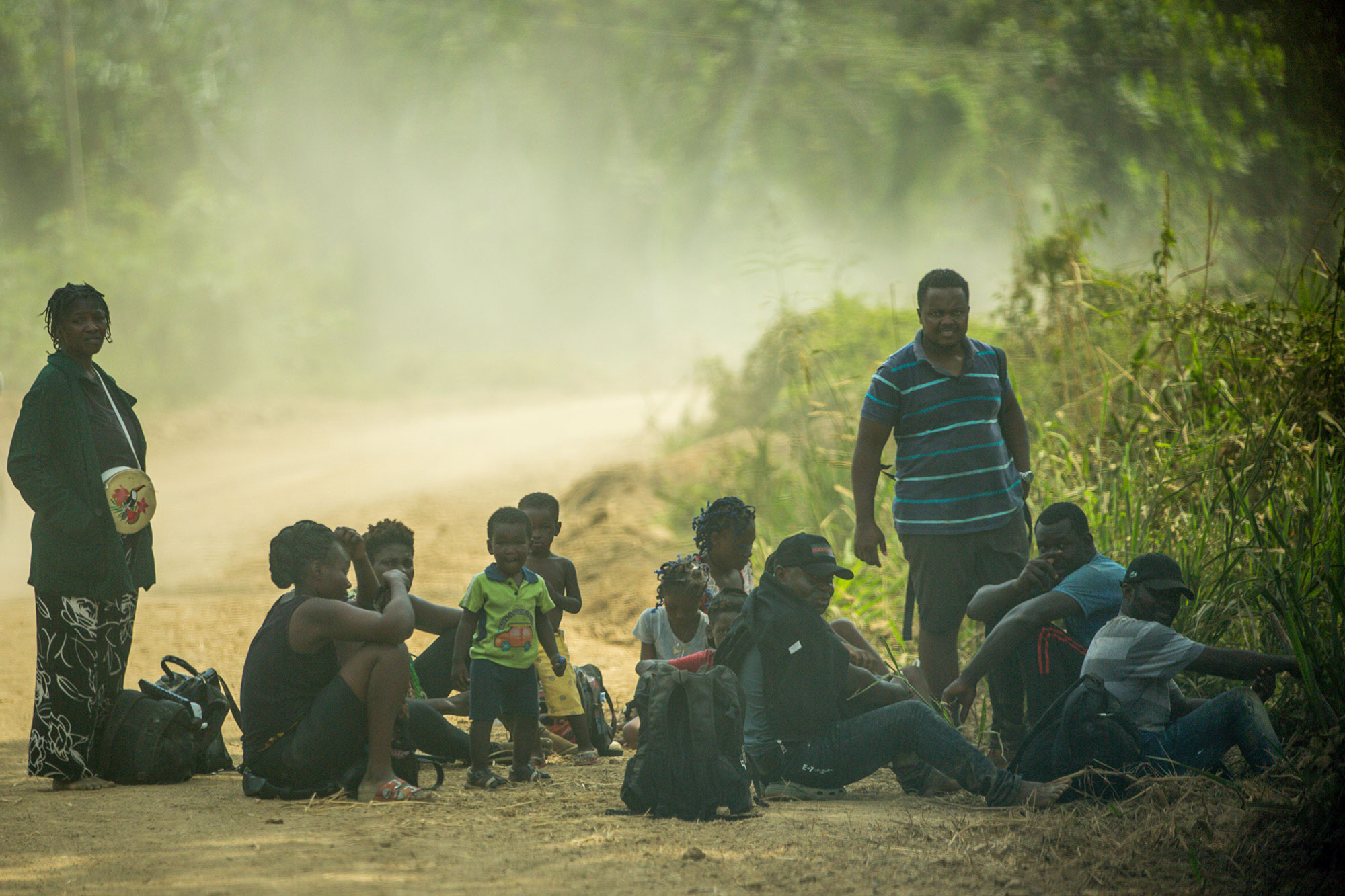
A group of migrants from Haiti and the Democratic Republic of Congo, including Tsheve Mundeke and his daughter Carla Elizabeth, stops to rest on the road between the Bajo Chiquito and La Peñita migrant camps in the Darién region of Panama. The migrants said they were robbed in the jungle and didn’t have the $25 each to take a boat between the camps, so they set off on foot for the six-hour journey. (Photo by Nicole Neri/Cronkite Borderlands Project)
Torn between humanitarian ideals and U.S. pressure, Panama screens migrants from around the world
By Calah Schlabach/Cronkite Borderlands Project |
LA PEÑITA, Panama — Tsheve Joseph Mundeke watched his 9-year-old daughter, Carla Elizabeth, collapse into the dirt at the edge of the road, exhausted. They were only a few miles from their next stop, the village of La Peñita, but after a weeklong trek through Panama’s Darién Gap – considered the most dangerous jungle in the world – they had to take a break.
Dust stuck to Elizabeth’s sweaty skin as SENAFRONT, Panama’s border patrol, bumped by in Jeeps. In Bajo Chiquito, the village she and her father had left a few hours earlier, a group of 100 migrants were boarding boats for an easier trip upriver to La Peñita, which is near the border with Colombia. But the Mundekes’ group had been robbed in the jungle and didn’t have the $25 each to pay the indigenous villagers who shuttle migrants between camps in long, thin motor boats.
Tsheve and Elizabeth opted to walk with the group Tsheve said he now considers family.
Panama is the latest step in the Mundekes’ journey, which started in the Democratic Republic of Congo more than four years ago. The father and daughter are not alone in undertaking journeys of thousands of miles from their home countries, first to South America and then through Central America in hopes of reaching the U.S. In 2019, more than 22,000 migrants from more than 60 countries braved the Darién Gap to cross into Panama from Colombia, according to SENAFRONT and Panama’s National Migration Service.
Oriel Ortega Benitez, director general of the border patrol, described the evolution of what Panamanians call “irregular migration” in the region, which he said started increasing in 2011 due to a complex series of causes, including tightening immigration laws and labor markets in countries to the north and south of Panama.
Instead of trying to enter the United States or Mexico directly, which is increasingly more difficult, some migrants now begin in South America and make the long, arduous journey over land. Others were already in South American countries, lured by jobs and lax visa requirements, both of which have begun to disappear.
“Historically, we had migration flows that never exceeded 300 to 400 people each year and only from South America and very little from Central America,” Ortega said. “We have started to see an increase in migrants from African countries and Asia. From 2014 until now, migration flows have been massive, including Cuban and African people.”
Panama has become a transit country for migrants from around the world fleeing violence, poverty and prejudice, most trying to reach the U.S., Canada and, increasingly, Mexico. For many migrants, Panama is their first encounter with the U.S. immigration system, which is working with Panama’s border patrol to track entrants.
Farther north, the U.S. is pressuring other Central American countries to stop migrants or accept those who have been deported, but, so far, the U.S. lacks the leverage to stop Panama from allowing migrants to pass through the country on their way north. Instead, in the name of national security, the U.S. provides a biometric tracking system to help the Panamanian government screen migrants passing through the country.
President Donald Trump’s crackdown on immigration has effectively reduced migration to the U.S., but the humanitarian crisis isn’t over – it’s simply moved south. Migrants who pass through Panama get stuck at such blockage points as Tapachula, Mexico, near the Guatemala border, and Nogales, Mexico, where they wait in makeshift communities for weeks or even months in the shadow of the U.S.
By helping Panama screen migrants entering the country with the biometric system, the U.S. can monitor migrants approaching its border, even if it can’t stop them from arriving there. Panama, torn between its country’s interests, the humanitarian needs of the migrants and pressure from the Trump administration, has created a system of “controlled flow” in which border patrol agents screen migrants entering the country from its border with Colombia and then bus them north to Panama’s border with Costa Rica. Costa Rica accepts 100 migrants each day, and many migrants continue moving north.
Ortega described why Panama has a different approach to border patrol.
“The Colombia-Panama border is very different because it’s exclusively jungle,” he said. “These people traverse and break through the jungle for approximately nine days – they climb mountains in adverse weather. This area has malaria outbursts. And this causes a change in the processing of irregular migration. Since they are in the jungle, it is our responsibility to serve them and help them. … This is why our duty – instead of being law enforcement, or enforcement of immigration law, requires that we shift to provide humanitarian help.”
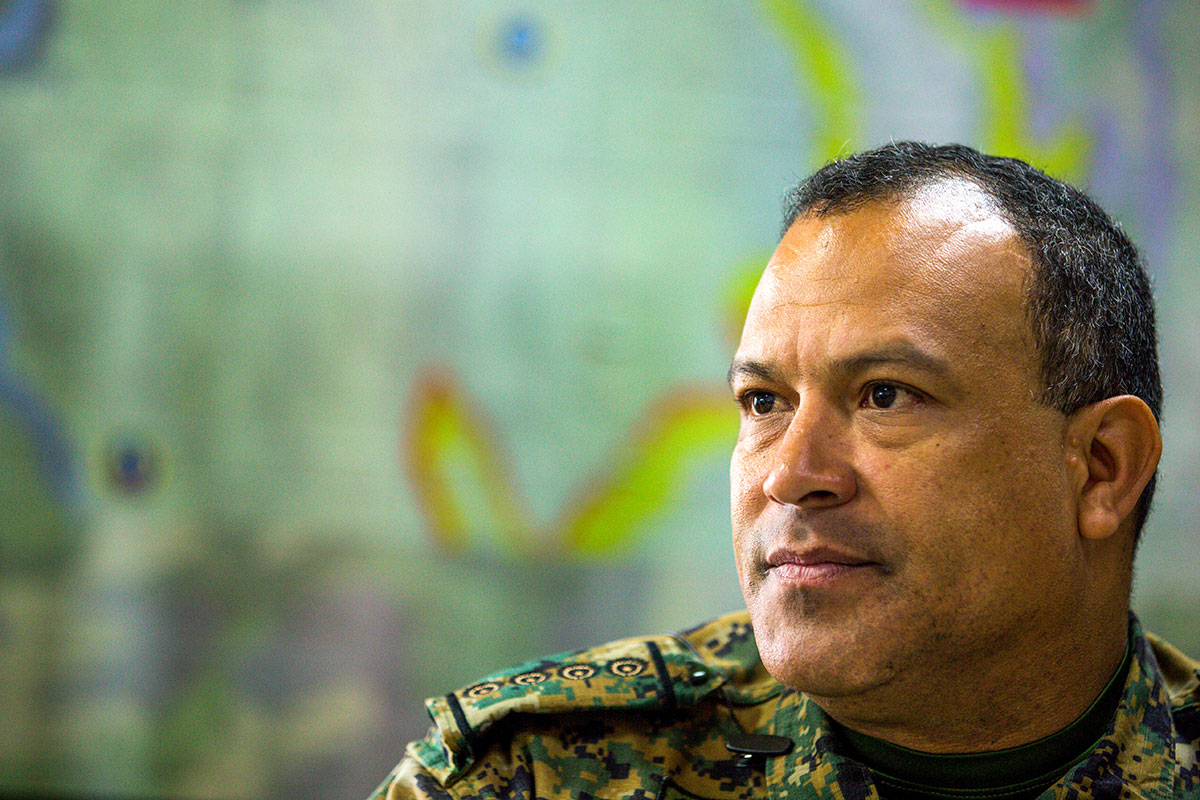
First stop: South America
The Mundekes are among the migrants who crossed the jungle and entered into SENAFRONT’s controlled flow system.
Like many “extracontinentals” – migrants from outside the Americas – the Mundekes settled first in Brazil, where Tsheve worked in a pharmacy for four years. Extracontinental migrants, as well as migrants from Haiti and Cuba, often begin with a plane trip to one of a number of South American countries with lax visa laws, commonly Ecuador, Chile, Guyana and Brazil.
Some migrants plan to stay in these countries for good but are driven out by political turmoil, poverty or xenophobia. Others stay for months or years while they earn enough money to continue north. Some migrated for short-term jobs, such as building World Cup and Olympic facilities in Brazil, but had to move on when the projects were over.
Santiago Paz, Panama chief of mission for the International Organization of Migration, said foreign labor was key to building Brazil’s World Cup and Olympic facilities.
“So all the stadiums, all the roles, the whole infrastructure that was budgeted and needed for these two big events were made mainly from workers from Haiti,” he said.
Now, these workers and other migrants are forging a route traced by others before them to seek safety or better economic opportunities – or any economic opportunity – in North America.
Through the jungle
The isthmus of Panama has an ideal geography to serve as a pinch point where authorities can corral and screen migrants attempting this route. It’s a narrow country, just 120 miles across at its widest point.
The Darién – a jungle so dense and dangerous that the Pan-American Highway stops at one end and resumes at the other – straddles the 165-mile border between Colombia and Panama. Just outside the jungle on the Colombian side, migrants form groups and pay smugglers, often called coyotes, to guide them through safely.
Fislianito Tocamo, a forensic scientist for Panama’s Ministry of Public Security, said many of these smugglers do no more than point migrants over the first mountain visible from the Colombian side of the jungle and say, “When you get to that peak over there and descend the other side, you are in Panama.”
Tocamo is familiar with the Darién from his 25 years of work examining bodies, some of which were discovered in the jungle. He said the mountain the smugglers show migrants actually is only the first few miles of densely forested, mountainous terrain.
“When they climb over and then descend, it is not ‘Panama,’ it is Darién,” Tocamo said. “And to get to the flat ground of Darién, it still takes many days. Some of them say it takes 15 days. Some of them say a month – lost in the mountains.”
According to SENAFRONT officers, migrants follow two main paths, guided by rivers and pieces of torn clothing tied to trees by those before them. But Tocamo says routes aren’t that obvious – some migrants get lost, follow the wrong river and travel in circles for days.
Although rivers provide direction, they are one of the most severe threats migrants face. Tocamo said most of the bodies he has inspected in the Darién were found in a river – evidence of migrants having either been swept away by flash floods or thrown into the water by maurading bandit groups that run rampant in the jungle, robbing and raping migrants.
Between the danger of bandits and such challenges of nature as venomous snakes, diarrhea-inducing water, 90-degree humid heat and malaria-carrying mosquitos, even the best-prepared are ill-equipped for the journey.
Marcelys Jiménez made the Darién journey in December 2019. She brought eight days’ worth of food for her family of four. But they had to slow down when one of their children became sick and the group they were traveling with for safety left them behind. Then they were robbed.
“(We spent) day and night walking, listening to the screams of different people who have to be left because they can’t stand it anymore, they can’t walk,” Jimenez recounted.
She thanks God that she and her family made it out. She counted 27 people dead over their 11-day crossing.
No one knows the total number of migrants who die in the Darién Gap.
Humanitarian aid in Bajo Chiquito
When migrants emerge from the jungle, one of their first points of rest is Bajo Chiquito, an indigenous village along the Tuquesa River that is swollen by desperate migrants traumatized by the jungle. This is where border patrol agents start to intervene to control the flow of migrants and provide humanitarian aid, which go hand-in-hand under SENAFRONT’s philosophy.
“We have to do both (protection and humanitarianism) at the same time,” said Alexis Betancourt, commander of the eastern brigade that patrols the Darién region. We have to have internal control, but we also need to understand that people are fleeing towards a better life. … Our border with Colombia is not your typical border; it is a hostile border.”
Migrants report being glad to see border patrol agents when they arrive in Bajo Chiquito, considering them as a protective force much appreciated after encounters with bandits in the Darién. But after a few days there, they often become frustrated.
SENAFRONT gives migrants food and water rations, but it’s rarely considered enough by migrants, many of whom hadn’t eaten for days before arriving. If families need more than their allotted amount, they have to find it on their own, and it’s usually provided, for a price, by villagers.
But many migrants emerge from the Darién without any money to purchase extra supplies – nearly all report having been robbed in the jungle. Jhony Sigueny, 30, a Haitian migrant, complained about inflated prices.
“In the mountains they stole all the money,” he said, adding that “to buy some water it’s five dollars.”
Other migrants complained about the quality of the food provided. SENAFRONT officers said they are doing the best they can with the resources they have, given the crisis situation. The camp at Bajo Chiquito, built to hold 100 migrants, had 800 in mid-March.
“The flow (of migrants) hit us unexpectedly,” Betancourt said. “But in regard to other issues, including people refusing to eat the food we give them, that is their choice. People in these shelters are treated fairly abiding by human rights protocols.”
He said he has seen SENAFRONT officers give their own food and water rations to migrants.
“There will always be complaints,” he acknowledged. “But in general, we and the people of Panama welcome migrants because we understand that they leave their countries for a reason.”
Eventually, border patrol agents move migrants on to La Peñita, the next stop in the process. Villagers run boat shuttles and migrants pay them $25 per passenger for their efforts.
Some, for lack of money or patience, opt to walk the six hours from Bajo Chiquito to La Peñita, as the Mundekes did.
Security in La Peñita
In La Peñita, long, thin boats disembark amid migrants swimming and bathing in the river underneath a “No swimming” sign nailed to a tree. SENAFRONT guards in camouflage pants and neon shirts assist migrants, who clutch children, water bottles, backpacks and plastic trash bags of possessions, out of the boats and organize them into a line.
It’s in La Peñita that SENAFRONT’s security work begins in earnest, with assistance from the U.S. biometric screening system, called BITMAP, short for Biometric Identification Transnational Migration Alert Program.
Migrants first sit at a table under a blue tarp outside the SENAFRONT building. A Panamanian official records each adult’s basic information and takes their passport. Then, inside the building, each adult places all 10 fingers on a fingerprint scanner and looks into a machine that scans their retinas.
SENAFRONT provides all the biometric data to U.S. Department of Homeland Security officials, who check it against various U.S. databases.
“If that person has been encountered by any of these agencies within DHS or DOJ (Department of Justice) or DOD (Department of Defense), then that might trigger an alert and then we’ll share that with the Panamanians,” according to a Homeland Security official who spoke at the U.S. Embassy on the condition that he not be identified by name.
Alerts tell SENAFRONT officials whether a migrant has been flagged by Homeland Security for criminal records or connections to terrorist groups abroad, and they recommend which migrants should be held in La Peñita.
“If there’s a positive hit, if we have any derogatory information on a person that comes through that region, we share that with Panamanians, and then it’s up to them to decide, ultimately, what they’ll do with that,” the Homeland Security official said.
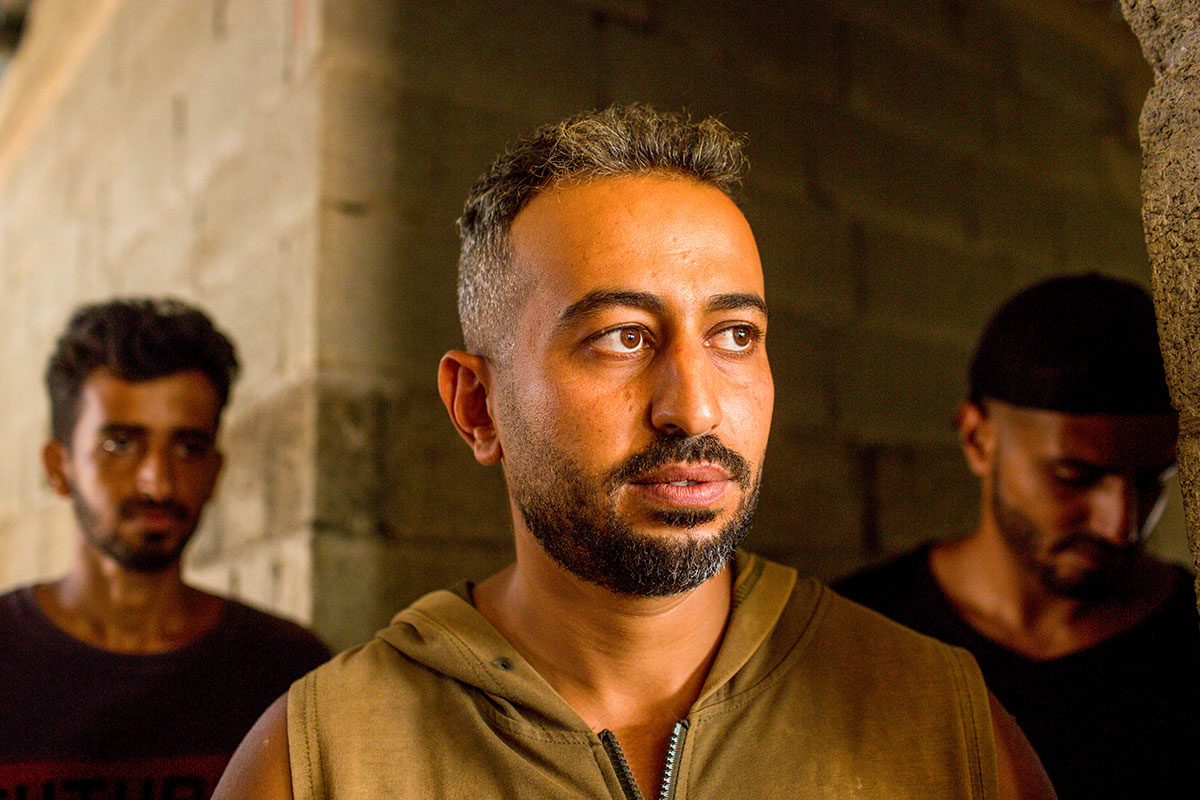
Marwan Mohammed Alud, 33, of Yemen, photographed on March 7, 2020, has spent 51 days in La Peñita, a migrant camp in the Darién province of Panama. (Photo by Nicole Neri/Cronkite Borderlands Project)
Some migrants expressed confusion and anger over the alert system, complaining they didn’t understand how it worked. In March, a group of Yemeni men reported having been held in La Peñita for more than 50 days while other people were allowed to pass through after only a few days in the camp.
One of this group, Marwan Mohammed Alud, said that when he first saw SENAFRONT officers, he felt safe. “But after that they took my passport, my cellphone. I asked him why. There is no reason, they didn’t answer me. … I ask him, ‘Hey, am I a criminal?’ They say, ‘No, just shut up.'”
“There are no answers, no solutions,” Alud said, for what he views as racial profiling.
The DHS official at the embassy acknowledged that the U.S. is aware of the Yemenis’ case, saying, “There is an ongoing investigation regarding that group.” He insisted that the men were not being held just because they were from Yemen.
Most migrants are cleared quickly and stay in La Peñita for about five days.
In fiscal year 2019, SENAFRONT enrolled more than 20,000 migrants in the BITMAP system from the Darién region. According to the DHS official, this was the most migrants traveling through the region who have been enrolled since the program started in 2011.
Some of the increase might be from improved consistency, equipment and training on the part of SENAFRONT. The DHS official said that “as time progressed, they just decided to enroll everyone they encounter” because they saw the benefit of knowing who is entering their country.
Ortega, the border patrol’s director general and top official, said, “This is one of the important reasons for information exchange in real time and to have an early alert system active. Since 2011, when the irregular migration movement started, we have had more than 49 alerts of people from different countries linked to terrorist groups. This is a great contribution to security, not just nationally but globally.”
The DHS official said the BITMAP program has been successful in that, “I think we have had several known and suspected terrorists flying through the region, and they’ve been denied entry into Panama.”
But just because the U.S. supports BITMAP screening doesn’t mean it supports the continued flow of migrants through Panama. The Trump administration is in continual conversation to persuade Panama to adopt its own process of deporting migrants, the DHS official said, adding, “We want to get away from controlled flows just as a deterrent for irregular migration.”
It’s still in the U.S. interest to invest in Panama’s screening process, even if Panama chooses not to hold a migrant the U.S. has flagged. Once individuals are enrolled in the system, the U.S. can track them as they move north.
“Ultimately, if they show up in the Southwest border, we will have their movements, at least from Panama onward,” the official said.
Barriers ahead
Eventually, SENAFRONT buses migrants to Chiriqui, on the border with Costa Rica, which accepts 100 migrants from Panama each day.
For migrants determined to keep heading north, the path gets more tenuous as other Central American countries crack down on irregular migration, often under U.S. pressure.
The DHS official affirmed that, since Mexico started enforcing its border under U.S. pressure and Central American countries have been allowing the U.S. to repatriate migrants, the numbers reaching the U.S. southern border “are down for sure.”
“I think all the different policies that are being implemented in the region have had an impact on people ultimately ending up at the border,” the official said.
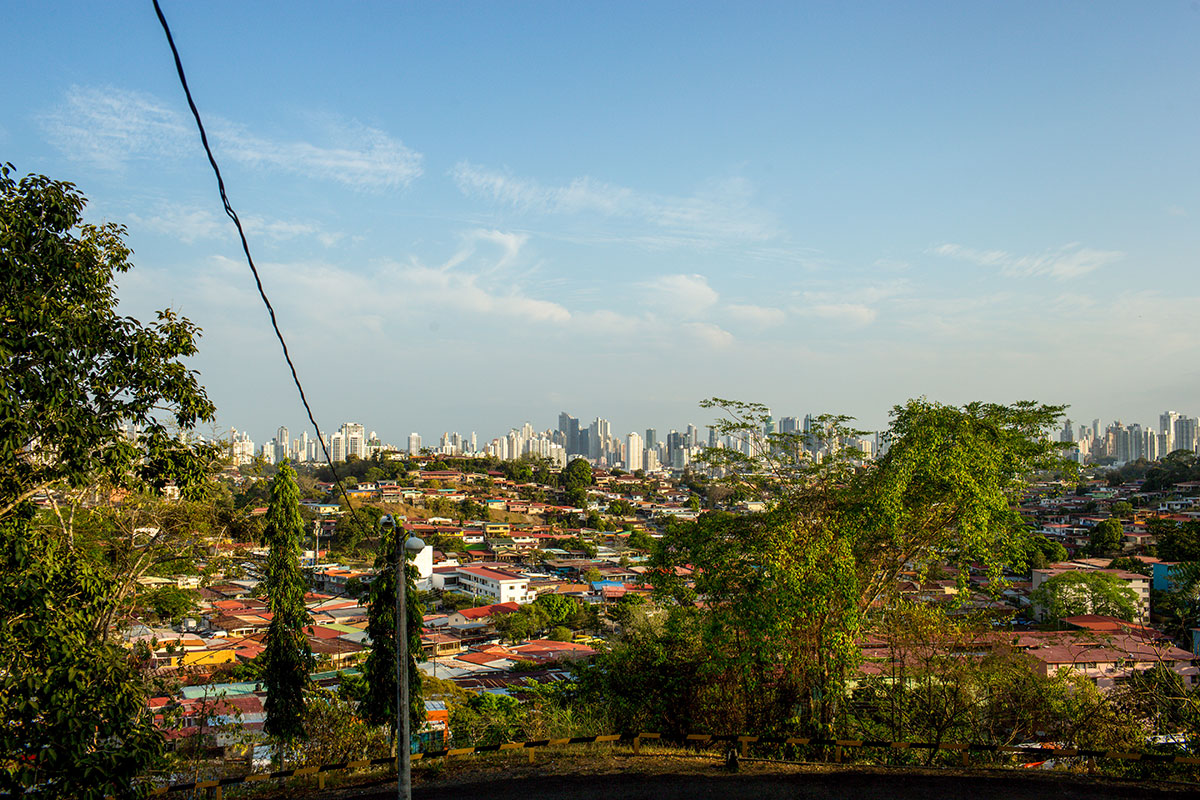
Irregular migrants who stay in the controlled flow system never experience more urbanized areas of Panama, such as Panama City, pictured on March 5, 2020. (Photo by Nicole Neri/Cronkite Borderlands Project)
Some migrants seem to be catching on to the fact that it’s getting harder to get to the U.S., and that a successful asylum claim is even less likely.
Some, like Sigueny, the Haitian man encountered at Bajo Chiquito, have realized Mexico is a more realistic option. Sigueny said it has the added benefit of being a short flight home to Haiti, where his parents still live.
Others, like Jimenez and her family, did their research and chose Panama as their destination before leaving home, knowing that, according to the law, they could seek refugee status in Panama.
And tens of thousands from nearby Venezuela and Nicaragua have fled to Panama amid political and economic upheaval over the past five years, staying close to their homelands in case it’s ever safe to return.
Ortega says migrants are free to ask for asylum or seek refugee status in Panama if they “provide enough information to sustain claims that they are in danger in their country of origin.”
But Raul Elias Arauz de Leon of Fe y Alegría, a nonprofit that assists migrants in Panama City, said most migrants don’t know seeking asylum in Panama is an option, and that SENAFRONT officers don’t go out of their way to inform them. He said officers watch them carefully from the time they arrive in Bajo Chiquito until they cross into Costa Rica.
Furthermore, when the controlled flow process works as intended, most migrants never experience more urbanized areas, such as Panama City. Their experiences in the Darién and the migrant camps shape their impressions of the whole country.
Those who do want to stay in Panama legally reported having trouble getting out of the controlled flow system. This was the experience of Jiménez, who’s seeking refugee status in Panama.
According to Jimenez, when she and her family finally made it out of the Darién, she repeatedly told SENAFRONT officers that her family intended to stay in Panama and asked to have her family’s passports returned. The officers told her they needed to continue within the controlled flow system to Costa Rica and implied it would be a crime to stay in Panama.
Finally, Jimenez started recording their experience to share on social media through her husband’s network of human rights activists.
“When (agents) saw us doing the recording, they immediately handed us the documents and told us that we could get out on our own,” she said. They made it clear that, since the family was choosing to leave the migratory flow, “what happened to us is our responsibility now.”
The drama of today
SENAFRONT Commissioner Jose Bernal said the Panamanian government sees migration as a basic human right, and that also means respecting migrants’ wishes to reach their self-determined destination.
As more countries up north bow to U.S. pressure and migrants pass the word back home that it’s no longer possible to reach the U.S., Panama might evolve from a transit country to a more popular final destination.
“Panama is experiencing economic growth, probably many migrants will try to cross to come to Panama,” acknowledged Paz of the International Organization of Migration.
But the country’s refugee system is already under strain, evidenced by a three- to four-year backlog of 16,000 applications currently pending; no one knows how many more have settled without proper documents.
In a country of 4.3 million, this influx is significant, and it will continue to strain the country. It already has increased existing xenophobia toward Venezuelans who have settled in Panama.
“The immigration issue cannot be managed by only one country,” Paz said.
Professor Olmedo Garcia, dean of Humanities at the University of Panama, said the U.S. is pressuring other countries to take on the migrant influx when, “There must be a sustainable public migration policy that attends to (one), international commitments, two, protection, three, individual rights.”
Garcia doesn’t believe that is happening right now; instead, Central American countries are being pressured to serve the immigration interests of the U.S. The situation is fundamentally unfair, he said.
“We are at a disadvantage because we think they are cooperating with us,” he said of U.S. authorities. “Countries are not cooperating when one makes all of the decisions. There should be dialogue with other countries and negotiations.”
Although there’s no easy fix to the migration crisis, Garcia said, any solution would require regional cooperation, and he hasn’t seen that happening.
“Today the drama is migration, because of the hunger, the unemployment,” he said. “Because we have created a world with little mutual support.”
Cronkite Borderlands Project is a multimedia reporting program in which students cover human rights, immigration and border issues in the U.S. and abroad in both English and Spanish.
Connect with us on Facebook.



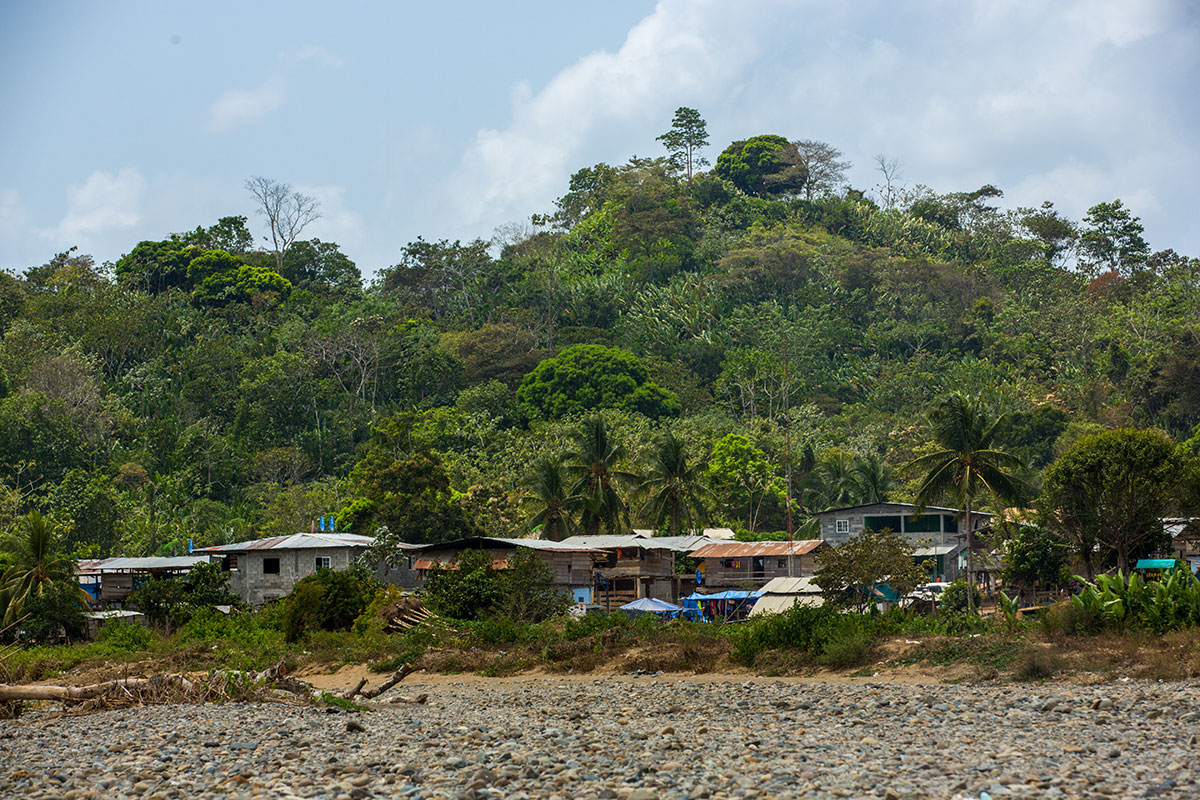
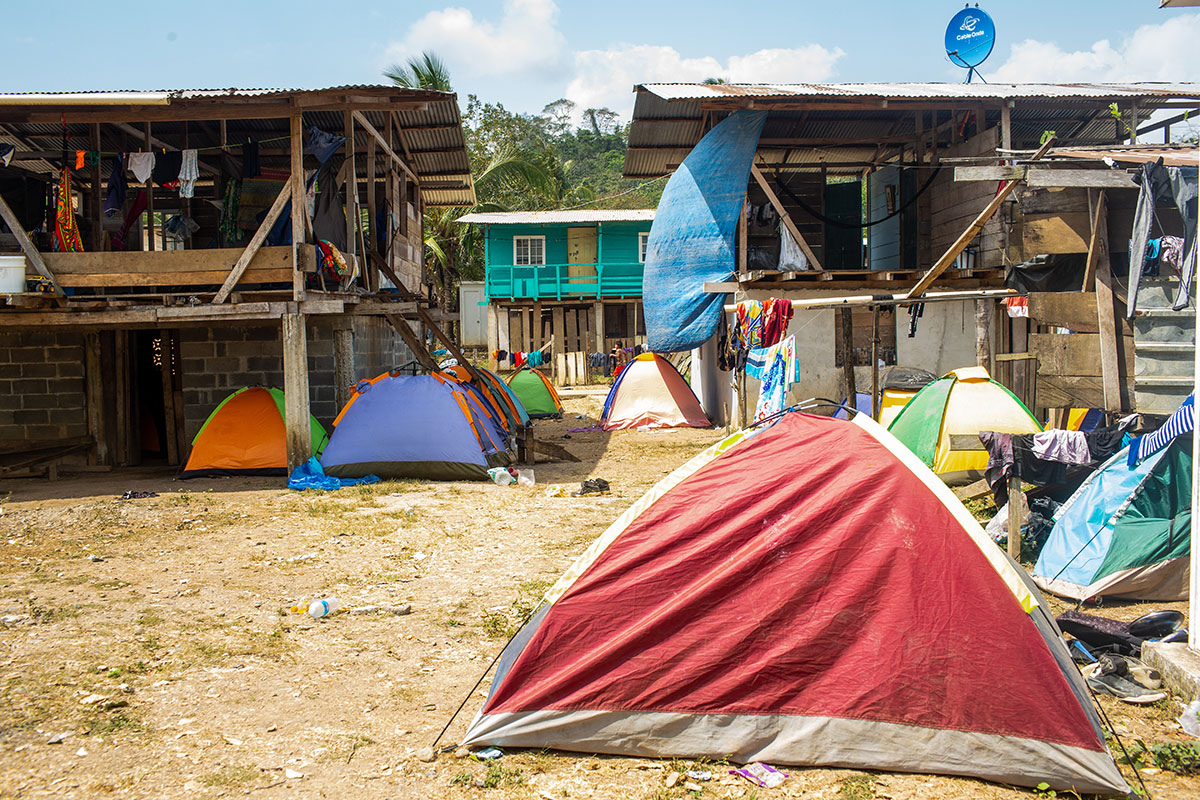
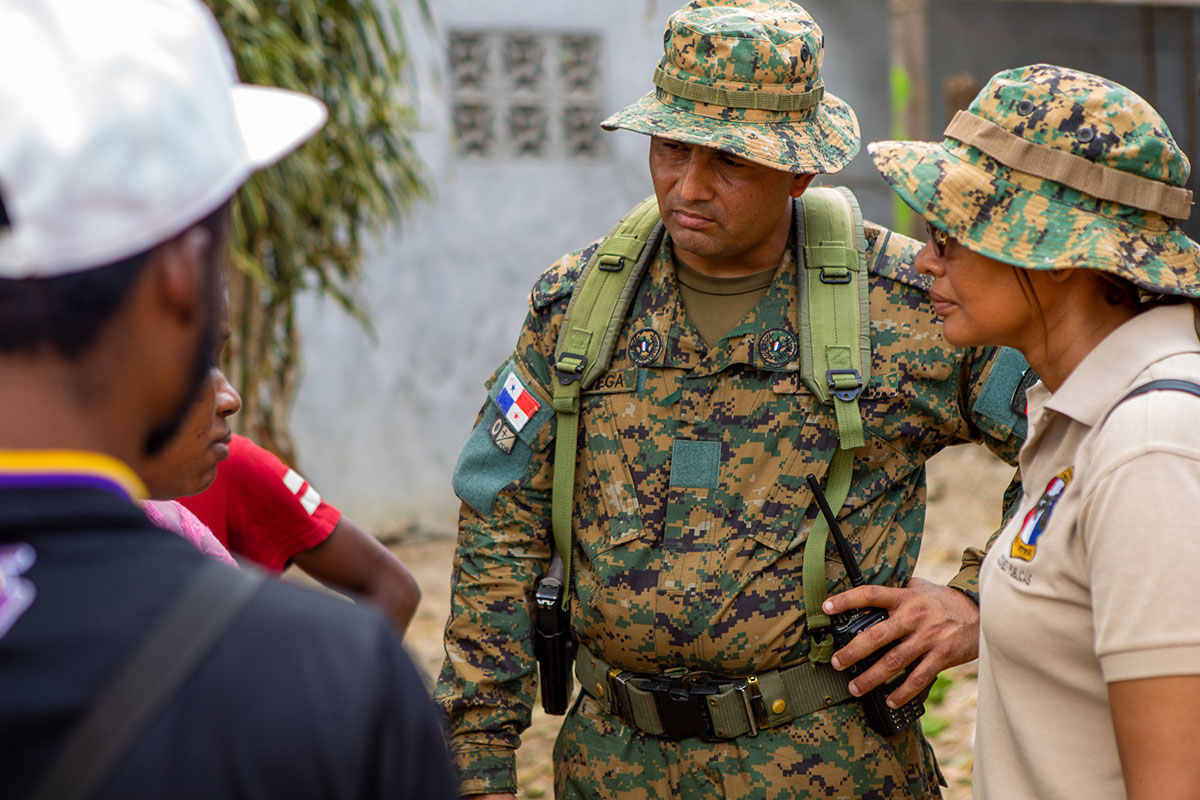

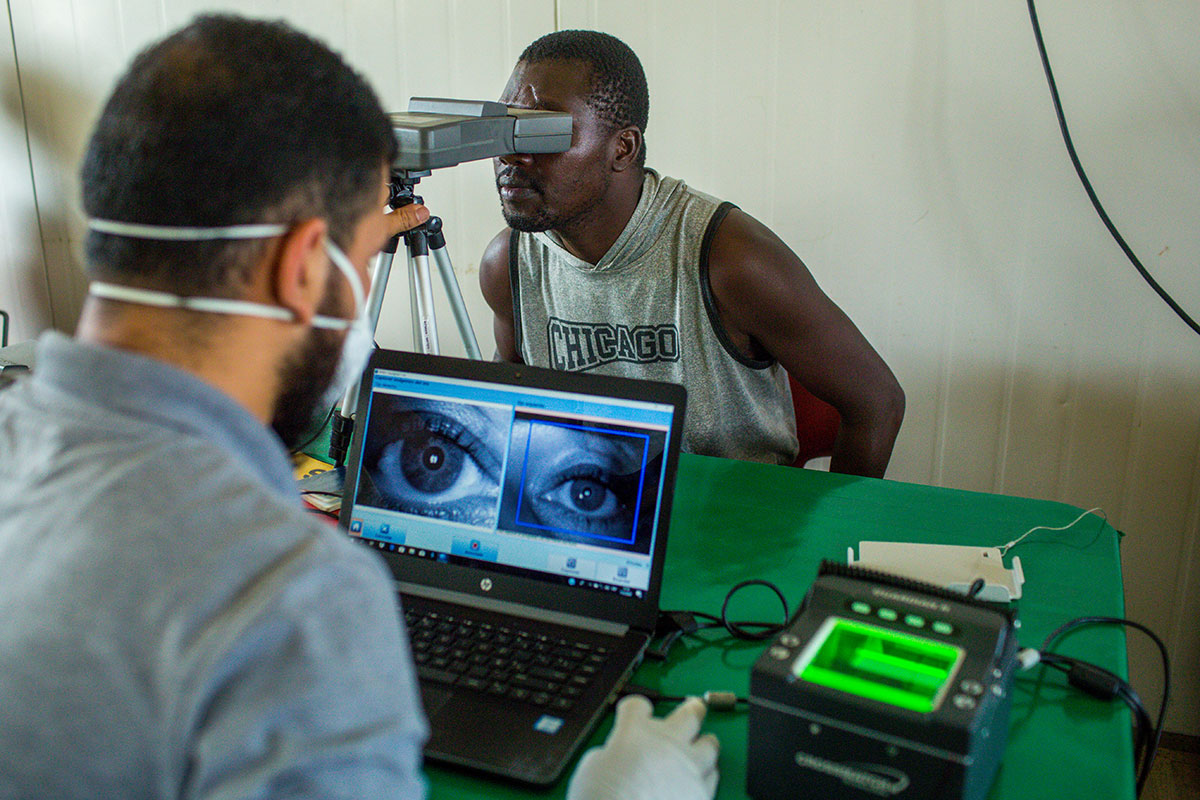
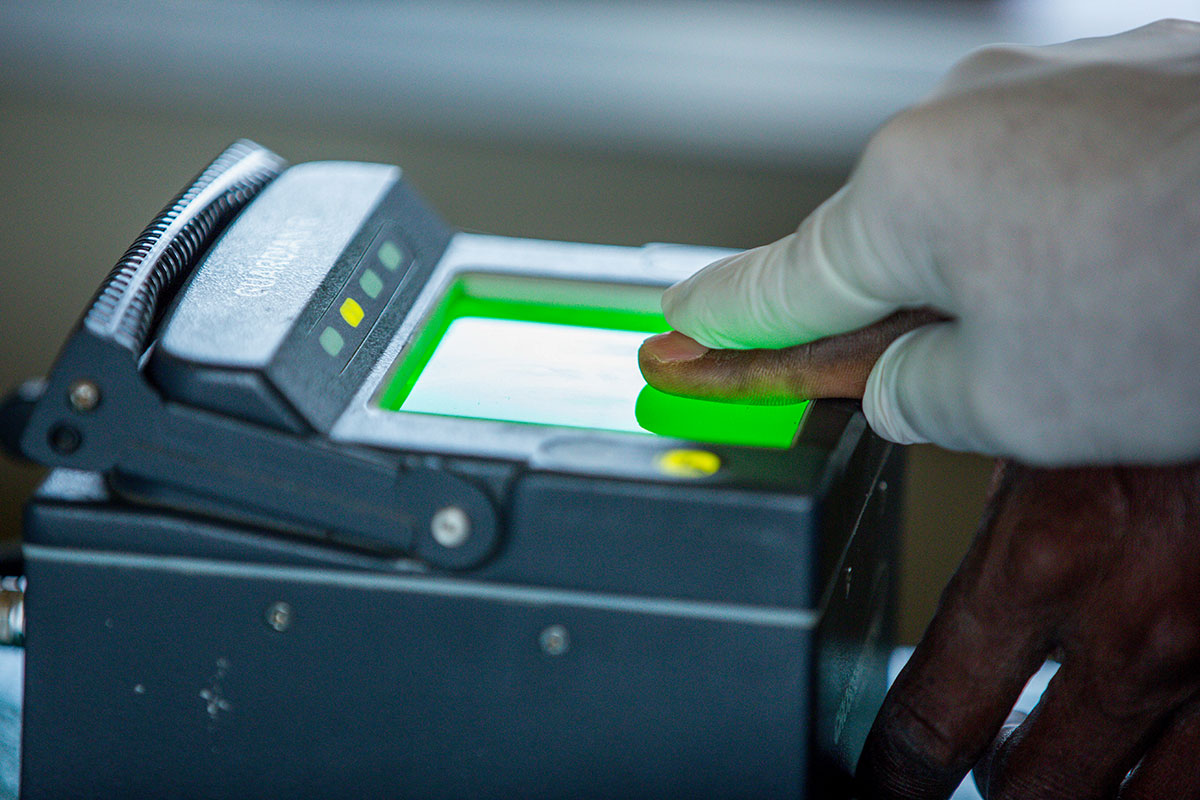
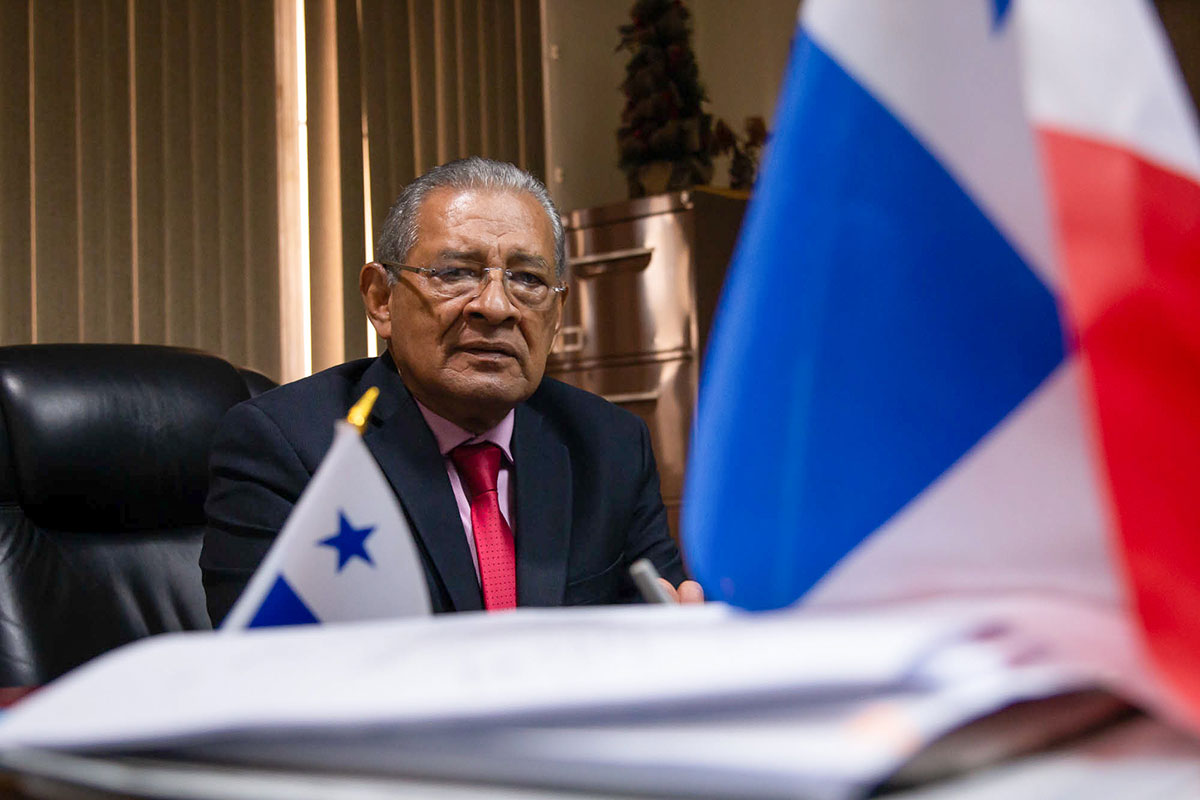
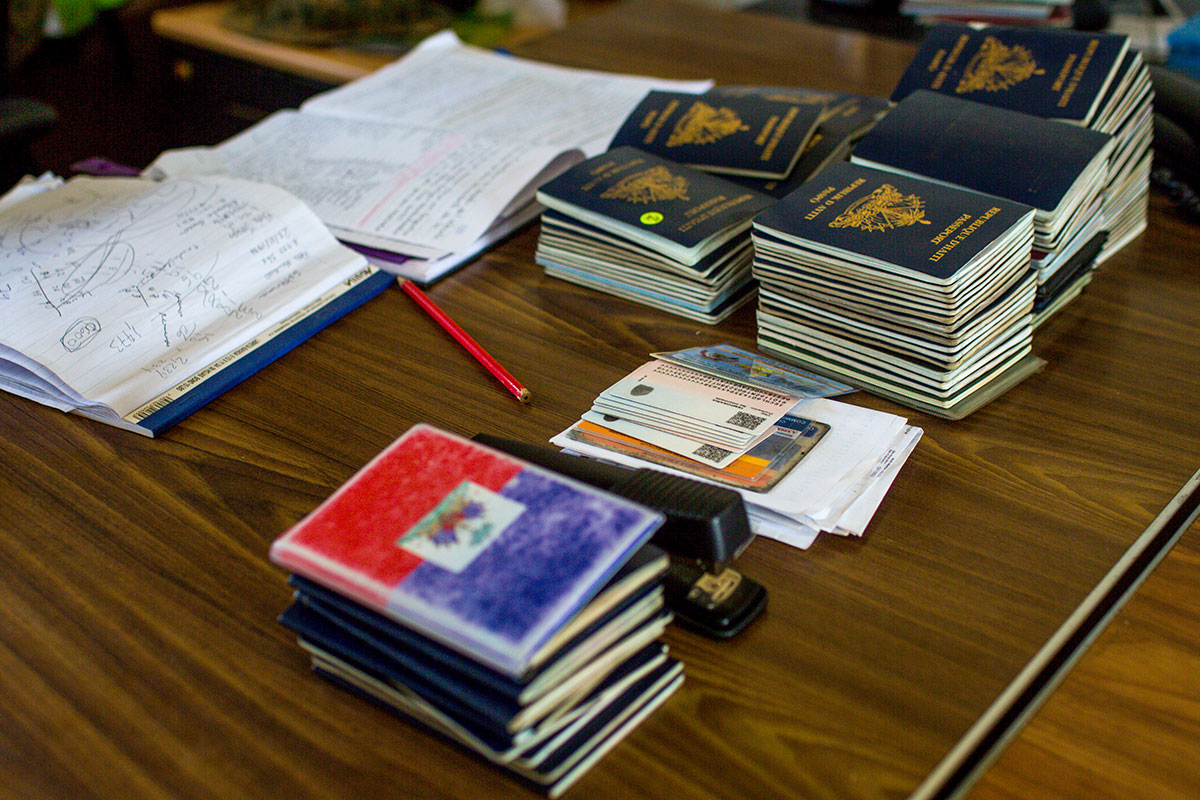
Leave a Comment
[fbcomments]